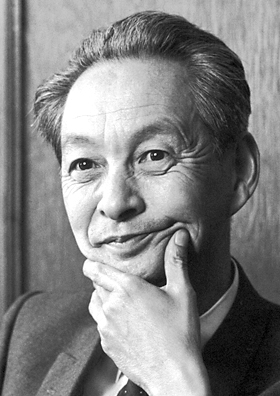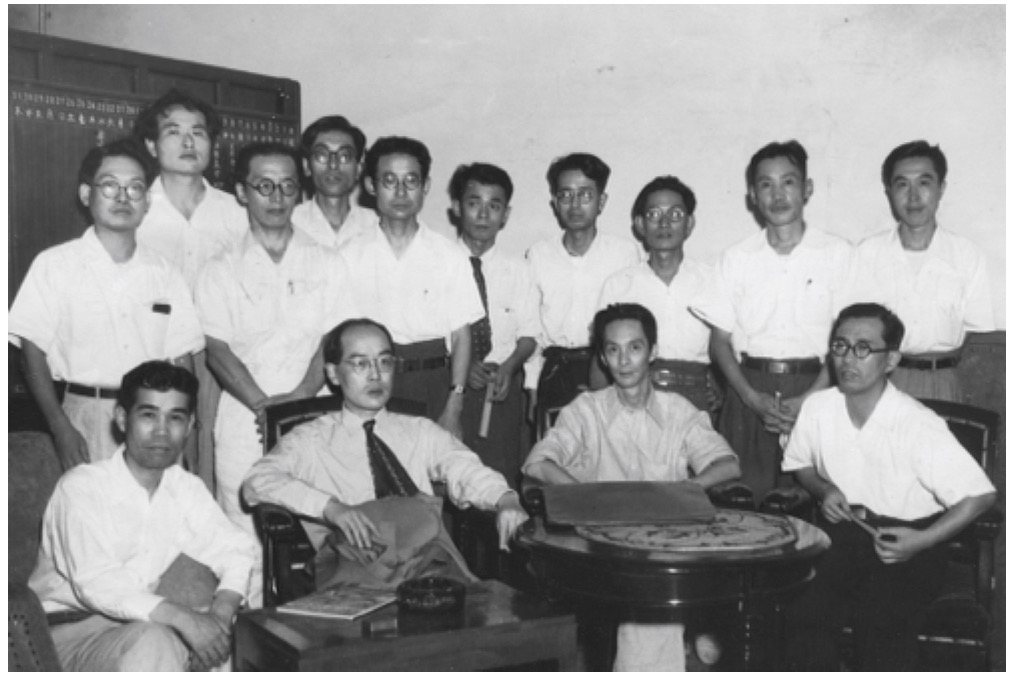Shin-ichiro Tomonaga, a friend and rival physicist
Shin-ichiro Tomonaga(1906 to 1979, Winner of Nobel Prize in Physics in 1965)Shin-ichiro Tomonaga, who won a Nobel Prize in Physics in recognition of his fundamental research on quantum electrodynamics, was Hideki Yukawa’s eternal rival. Tomonaga and Yukawa entered and graduated from Kyoto Daiichi Junior High School, Third High School and Kyoto Imperial University in the same years. They also became researchers of quantum mechanics under the guidance of Professor Tamaki. Yukawa and Tomonaga grew up in similar family environments. Their fathers were professors of Kyoto Imperial University, so Tomonaga and Yukawa must have studied hard when they were in school. Shin-ichiro Tomonaga once described Yukawa immediately after his graduation from the university as follows: “When Yukawa-kun started thinking profoundly about something, he has a habit of mumbling to himself. Since it was annoying, I used to escape to the library.” When Yoshio Nishina heard the news of Hideki Yukawa’s receipt of a Nobel Prize, he sarcastically said, “I should have taken Yukawa instead,” in a loud voice so that Tomonaga could hear. I imagine that Yukawa and Tomonaga were so close to each other that they could not help but be conscious of each other at all times. When Lamb and Retherford conducted an experiment on the hydrogen atom spectrum and obtained accurate measurements in 1947, Tomonaga reproduced the exact results of the experiment theoretically. That led to the winning of his Nobel Prize. Because Tomonaga’s calculations were posted in Progress of Theoretical Physics, an academic journal founded by Yukawa, they became known around the world. I am the editor in chief (as of 2018) of Soryushiron Kenkyu, a journal for the community of Japanese researchers involved or interested in the theory of elementary particles. This journal was founded by Seitaro Nakamura and Jiro Koba at the suggestion of Shin-ichiro Tomonaga immediately after the war. In the years when it was difficult to obtain research papers and reports from foreign countries, Hideki Yukawa frequently contributed articles to Soryushiron Kenkyu as “news from overseas” while he was at the Institute for Advanced Study in Princeton. Yukawa and Tomonaga fostered the theory of elementary particles in Japan from each other’s standpoint. Younger researchers who were brought up by them, so to speak, must not forget that the establishment of Japan’s rich foundation for the research of the theory of elementary particles owes largely to Yukawa and Tomonaga. Shin-ichiro Tomonaga once wrote about Hideki Yukawa as follows: “His job is to catch and elucidate something vague and hazy without changing its state…. From something vague and hazy emerges something identifiable. Even if not, at least some definite clue appears.” (Source: Dr. Yukawa’s 60th Birthday Memorial Collection, Kodansha Ltd.) Tomonaga had clear recognition that Yukawa’s way of theorizing was different from his approach to scientific research. Tomonaga constructed theoretical frameworks by performing accurate and reliable calculations, as represented by the process of formulating the renormalization theory. The above comment reflects how Tomonaga regarded Yukawa’s style of theorizing. There is no doubt that the two contrasting theorizing methods helped physics advance dramatically and led to the establishment of the foundation of modern physics. (Reference: Hideki Yukawa and Shin-ichiro Tomonaga, authored by Seitaro Nakamura, published by Yomiuri Shimbun) Written by: Koji Hashimoto (Professor in The University of Osaka and Chairman of the Museum of Yukawa Memorial, The University of Osaka Committee (as of 2020)) |
Shin-ichiro Tomonaga (Source: Website of Nobel Foundation)
In the front row, Hideki Yukawa at the second from the left, Shin-ichiro Tomonaga at the third from the left, and Shoichi Sakata at the right end In the back row, Yoichiro Nambu at the right end and Ryoyu Uchiyama at the second from the left Photo courtesy of Yoichiro Nambu |






